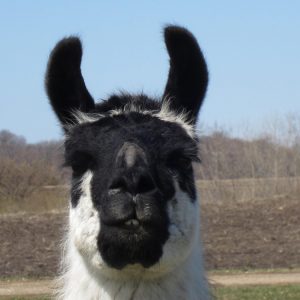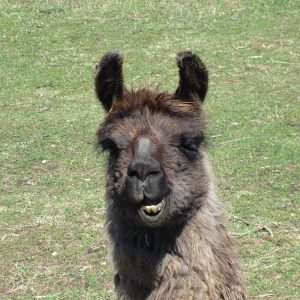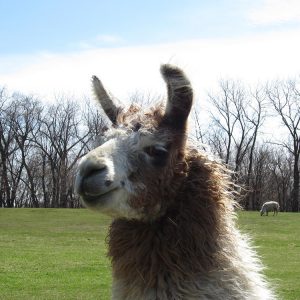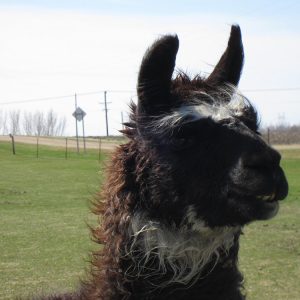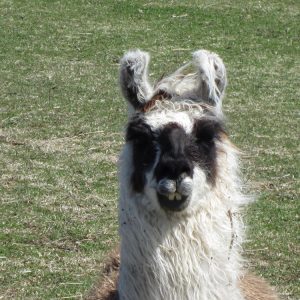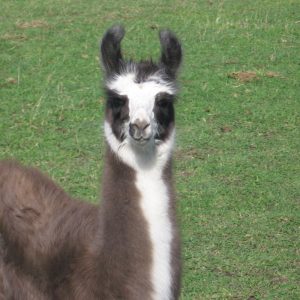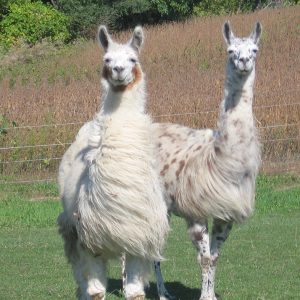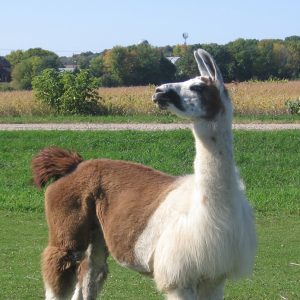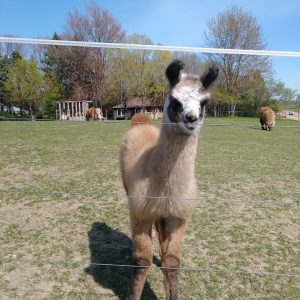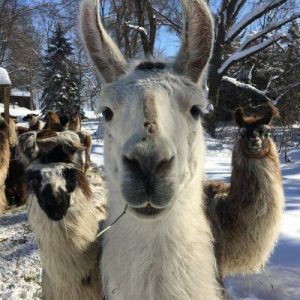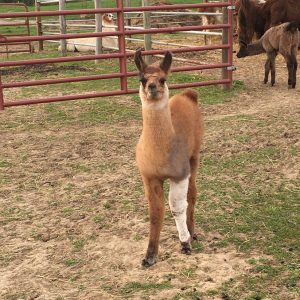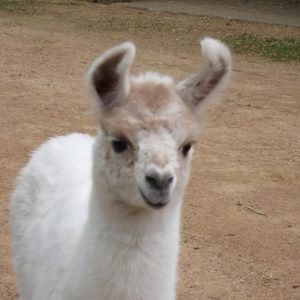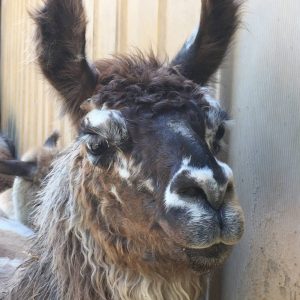Llama FAQ General Llama Information
-
Yes! Llamas are related to camels — they are both members of the “camelid” family. They are sure-footed, nimble and can live on very little vegetation.
-
Because they are native to Andean mountains of Argentina and Peru. Llamas live in grassy open spaces at very high altitudes of 7,400 – 12,800 feet, where the air is so thin there is only 40% oxygen. Llamas have unique blood that adapts well to the poor oxygen—they have more red blood cells per unit volume of blood than any other mammal. The hemoglobin, which is the oxygen carrying substance of the cell, reacts faster with oxygen.
-
Yes, Llamas are very gentle, curious and individualistic, they are well-socialized, very friendly and pleasant to be around. They are extremely curious and most will approach people easily. Llamas are very social herd animals.
-
A full-grown llama can reach a height of 6 ft. at the top of the head. Their weight can range between 290 and 450 lbs. New-born llamas, known as crias, weigh between 20 and 30 pounds.
-
Yes! Llamas can learn simple tasks after just a few repetitions.
-
Llamas make excellent guards for herds of small animals. They will protect their own herd but will also adopt and protect a herd of sheep or goats as their own.
-
Cría, means “baby” in Spanish. Llama crias born in the Andean wild are typically born with the females of the herd gathering around to protect against potential predators. Crias attempt to stand, walk and nurse shortly after birth.
-
Yes! Llamas have two coats— the downy undercoat is fine and close and gives protection from cold and heat. The second coat of guard hair allows moisture and debris to be shed.
-
Llamas communicate by humming. The hum has been likened to a cat’s purr or sometimes to a person humming. There is still much more to learn about how llamas communicate through humming. Their hums range in tone and urgency and seem to convey emotions and states of being. They hum when they are tired, distraught, curious or worried or content. Mothers may also hum to greet their new baby.
-
Llama life expectancy is 20-30 years.
-
Llamas are herbivores. They eat grass, hay and other grains. Some llamas enjoy treats like fresh vegetables and fruits, such as broccoli, sweet potatoes, carrots and apples – cut into small bites.

